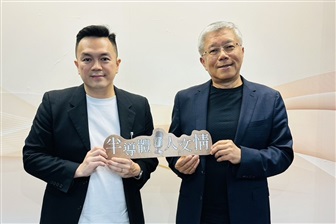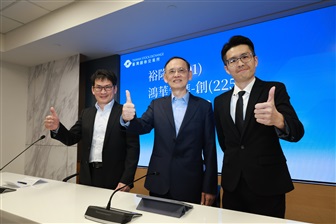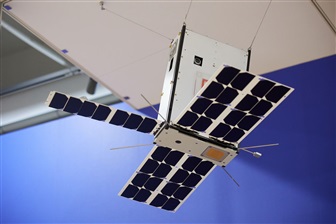Around the web
24 Jun 200823 Jun 200820 Jun 200819 Jun 2008
Luminus and TI have created lamp-free projectors, and Osram Opto and Design Dash Ltd. have developed image projection and IR technology for reconfigurable tactile displays.
LEDs Magazine
Toshiba plans to stop production of filament lamps in 2010 and move towards eco-friendly lighting
LEDs Magazine
...two major USA compound semi houses, TriQuint Semiconductor and Cree have announced they're opening their doors to GaN electronic foundry customers (v.s. GaN-based LEDs). The world has embraced GaN for LED applications rather nicely. Without GaN you simply wouldn't have blue spectrum LEDs. But for those of us who have been championing GaN for electronic applications for what seems to be decades, that foundry doors are finally opening is great news, as long as there are enough customers out there to make the efforts worthwhile.
Compound Semiconductor
..Applied Materials already had made an offer to buy two of ASMI's "front-end" businesses when Francisco Partners last week offered to buy its remaining front- end activities. ASMI put Francisco Partners' offer in the range of US$225-300 million, while Applied Materials has put its offer at US$400-500 million. ASMI rejected the bids Friday, saying they undervalued the businesses.
CNNMoney
Applied Materials' belief of non-infringement is based in part on differences between the SunFab tandem junction technology (as verified by scientific analyses such as Raman spectroscopy and transmission electron microscopy) and the claims of the Neuchatel patent.
Company release
An analyst cut his cellular handset forecast for LM Ericsson Telephone Co. Monday, saying global market growth will likely cool and the company may lose market share.
Forbes
The Justice Department has recommended a sentence of five years of probation and to require Samueli to pay more than US$12 million in penalties, according to the plea agreement.
CBS MarketWatch
...the processor will also enable users to use hand gesture controls to start, pause and rewind your entertainment, upscale DVDs from standard to high-definition and find certain parts of movies with face indexing. The downside is power consumption. The SE1000 is rated at a maximum power consumption of 20 watts, which is considerable in today’s notebook world. Pricing of the F50 (a 15.4” notebook that will include a GPS module) and the G50 (18.4”) are expected to begin in the $2500 and top out and well above $3000.
TG Daily
T-Mobile USA expects to deliver an Android-powered phone in the fourth period. But that launch is taking up so much of Google's attention and resources that Sprint Nextel Corp., which had hoped to launch an Android phone this year, won't be able to, a person familiar with the matter said. China Mobile, the largest wireless carrier in the world with nearly 400 million subscriber accounts, had planned to launch an Android phone in the third quarter but it has run into issues that will likely delay the launch until late this year or early 2009.
Wall Street Journal
The Korea Times
For the past 18 months, MVIS management has been promising to deliver a projector that will ultimately fit inside a cell phone. Texas Instruments just beat Microvision to the market (by at least 6 months). While one can debate whether or not there will ever be a market for a mobile projector with less than 500 lumens (low-end business projectors produce 1,000 lumens), one cannot argue the quality differences between Texas Instruments/Optoma's product and that of Microvision's 'Show'.
Seeking Alpha
The WiMax Forum has issued its first certifications for mobile-centric products that operate around the 2.5GHz frequency, and said it will start certifying 3.5GHz products later this year. The organization announced that 10 mobile WiMax products had received the "WiMax Forum Certified Seal of Approval". Four base stations, from Alvarion, Motorola, Samsung and Sequans, won certification, along with mobile modules from Intel, Samsung, Beceem, Airspan and Zyxel.
ZDNet UK News
Two years after ARCEP awarded 44 regional licenses for 3.5 GHz spectrum, a national network has yet to be launched, and only limited WiMAX activity has been reported on a regional basis. ARCEP said it will investigate the operations of license holders to confirm if they are meeting their roll-out obligations. The regulator said it will make its control until the end of June, and any company that has not met its obligations could face suspension of their license, or a fine equal to three percent of their revenue.
WiMAX day
South Korea's Samsung Electronics is to invest one billion dollars in a "state-of-the-art" microchip manufacturing facility in the Philippines. The Manila Bulletin newspaper said the facility will be built on a 30-hectare (74-acre) site in the Clark Special Economic Zone near the former US airforce base north of Manila. Quoting unnamed sources, the paper said "it will be a state-of-the-art" facility with construction starting "within the year."
AFP
Orange County Business Journal
PC Magazine
AP (via Google)
The Korea Times
TradingMarkets
656/1505 pages









